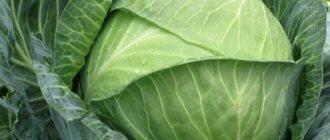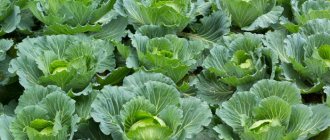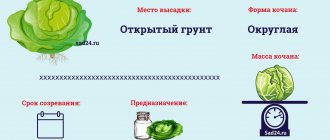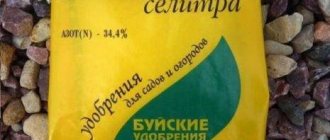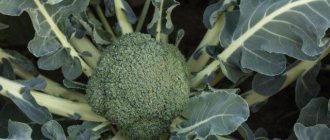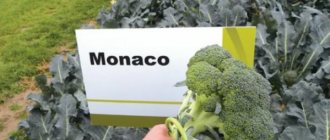Malachite cabbage is one of the hybrid varieties bred in Russia. It has high taste, long shelf life, and good yield. In addition, the hybrid is fully adapted to the Russian climate, which greatly simplifies the care of vegetation. Of course, these advantages of the variety did not go unnoticed by domestic gardeners, and today it is deservedly one of the most popular in the country.
Variety Malachite F1
Cabbage Malachite
Malachite cabbage is one of the hybrid varieties bred in Russia. It has high taste, long shelf life, and good yield. In addition, the hybrid is fully adapted to the Russian climate, which greatly simplifies the care of vegetation. Of course, these advantages of the variety did not go unnoticed by domestic gardeners, and today it is deservedly one of the most popular in the country.
Variety Malachite F1
General description of the Malachite cabbage variety
Malachite F1 has been listed in the state register since 1993. Since this period, the crop has been grown both en masse in fields and in household plots.
The plant itself is one of the white cabbage varieties. The bush reaches a height of 40 cm. The leaf rosette of cabbage is semi-raised, and its diameter is 70–90 cm. It consists of almost round leaves, the width and length of which are on average 25 cm. On one bush, such leaves grow from 14 to 18. Moreover, each of them differs in the following features:
- minimal edge waviness;
- light green or grayish color;
- covered with medium-sized veins;
- light waxy coating on the surface;
- short leaf roots.
It is also worth noting the well-developed root system of the bush, which allows it to obtain moisture and nutrients even from great depths.
Reference. The hybrid differs from other varieties in its long shelf life, resistance to cracking, and high yield of marketable heads of cabbage from the total mass. In addition, such a crop can easily be transported over long distances.
Characteristics of the head of cabbage
The heads of this type of cabbage are dense, but small. The main characteristics of each fork include the following:
- regular round shape;
- light green color of outer leaves;
- white-yellow color of the head cut;
- average weight is 1.2-1.5 kg, but some specimens grow up to 3 kg;
- head height – 17 cm;
- the length of the outer stump is 6 cm;
- the inner part grows up to 8 cm.
The heads of this variety of cabbage have excellent taste. Their leaves are used in salads and in preparing various dishes. In addition, the taste of the vegetable does not deteriorate during fermentation.
Ripening time, yield, disease resistance
Malachite F1 is one of the early ripening varieties. The average time for crop ripening when planted directly in open ground ranges from 90 to 130 days from the moment the first shoots appear. If you use the seedling method of growing, cabbage transplanted into a garden bed ripens within 55–65 days.
The plant's productivity is above average. From one square meter of planting area, if all the necessary conditions are present, from 3 to 6.7 kg of cabbage are harvested. On an industrial scale, the marketable yield of the vegetable is 400–500 kg/ha.
This cabbage variety has a fairly high resistance to fusarium and mucous and vascular bacteriosis. Also, when growing seedlings, seedlings rarely show symptoms of blackleg. But the culture’s resistance to clubroot is weak.
Cabbage variety Malachite F1
The best varieties of early cabbage - top 11
Already 2 months after planting, young cabbage can reach your table. You just need to choose the right variety.
| Variety name | Characteristic |
| "Golden Hectare" | High-yielding variety: 5-8.5 kg/sq. m. Heads of cabbage are light green, small, weighing 1.5-2.kg. Ripen in 102-110 days. Tolerates drought and frost. Loves light and moisture. Demanding on soil. Disease resistance is low. |
| "June" | The variety is cold-resistant (tolerates down to -5°C). The heads of cabbage are round-flat, small, of medium density. Weight up to 1-1.5 kg. Productivity 4.4 kg/sq. m. Ripens in 92-100 days. Severely cracking. Responses to changes in temperature and humidity. Excellent taste, high vitamin C content. |
| "Present" | A mid-early variety, rich in vitamin C. The heads of cabbage are medium-sized, dense. Head weight is 2-4.5 kg. Ripens in 124 days. Productivity 6-10 kg/sq. m. |
| "Slava-1305" | Ripens in 80-100 days. Unpretentious to grow. The light green heads of cabbage are dense. Their weight is 3-4.5 kg. The variety is high-yielding, resistant to low temperatures. |
| "Cossack" F1 | Early ripening hybrid. Ripens in 95-112 days. The weight of the heads of cabbage is up to 1.5 kg. Cold resistant. Productivity 3.5-4.5 kg/sq. m. The variety is resistant to cracking and diseases. Excellent taste. |
| "Transfer" F1 | The hybrid matures in 100-110 days. Resistant to temperature changes and cracking. Delicate green heads of cabbage weigh 1-1.5 kg. White inside. |
| Taurus F1 | Hybrid. One of the highest yielding. Ripens in 95-100 days after emergence. The weight of a head of cabbage can reach 6 kg. Resistant to diseases, cracking, low temperatures. The variety is distinguished by very high taste qualities. |
| "Copenhagen Market" | A Danish variety of early ripening cabbage that ripens in 115 days. The neat shape of the grayish-green head of cabbage and leaves with a fine structure distinguish this variety. Weight on average 1-2.5 kg. Productivity 4.5 kg/sq. m. Cold resistant. However, its keeping quality is low. |
| "Ditmar's Early" | Popular variety. Ripens in 105-115 days after germination. High-yielding: 5.5 kg/sq.m. m. Small heads of cabbage weigh on average 2 kg. The leaves are very juicy and thin. If the fruits are not removed from the garden in time, they will crack severely. |
| "Zolotovorotskaya" | Ripens in just 55 days after planting the seedlings. The heads of cabbage are compact, weighing up to 2 kg. The variety is resistant to cracking. Tolerates temperature changes normally. Excellent taste. |
| "Emma" F1 | The earliest hybrid, which ripens in just 45-55 days after sowing the seeds. A head of cabbage can weigh up to 1.5 kg. |
Advantages and disadvantages of culture
The Malachite F1 hybrid has gained high popularity in Russia and neighboring countries due to its wide range of advantages. These include the following:
- high yield of the variety;
- good taste;
- crack resistance;
- high content of ascorbic acid and carotene, which help strengthen the immune system and improve the condition of the skin and hair;
- possibility of long-term storage and suitability for transportation;
- resistance to a number of diseases;
- amicable ripening of most heads of cabbage.
This variety has practically no disadvantages. The only thing worth noting is the plant’s high susceptibility to clubroot.
Varieties for long-term storage
TOP 5 varieties characterized by the possibility of long-term storage:
- Cabbage Podarok – ripening period 130 days, can be stored for up to 4-5 months, yield 10 kg/m2, weight 4.5 kg.
- Sugarloaf - late ripening, excellent shelf life (up to 12 months).
- Moscow late 15 – growing season 160 days, shelf life 5-6 months.
- Amager 611 – late ripening, shelf life up to 6-8 months.
- Kharkov winter - ripening 140 days, weight 4.2 kg, high yield, excellent taste, immunity to spot necrosis, versatility, storage for 6-7 months.
Features of agricultural technology
Growing Malachite cabbage involves a technology generally accepted for all early varieties. The crop can be grown both by seedlings and without seedlings. But the first option is more preferable, since already strong seedlings give better results when planted and more easily survive cold, excessive heat and other negative factors.
Growing seedlings
Sowing seeds for seedlings is carried out in mid-March. Use purchased or home-made soil mixture. To prepare it, mix peat, soil from the garden (not from areas where cruciferous vegetables previously grew) and sand, keeping the proportions 1:1:1. After thorough mixing, the resulting substrate is poured into an iron container and placed in a hot oven for 10–15 minutes for disinfection. Also for this purpose, a weak solution of potassium permanganate is often used.
It is recommended to add fertilizers to the disinfected soil. To do this, take ready-made compounds and pour them into the soil in the proportion of 2 tablespoons per bucket of soil. Then the mixture is mixed again and poured into boxes with a side height of at least 5 cm.
If the seed was not purchased in specialized stores, it may require additional preparation for planting. It is carried out as follows:
- From the entire mass of seeds, spoiled, excessively dry and very different from the standard in shape and size are selected. They are not allowed to disembark.
- The seeds are wrapped in cloth and immersed in hot water (45-55 degrees) for 15 minutes. Next, the fabric is immediately transferred to cold liquid and kept for 3-5 minutes. The procedure helps kill pathogenic microorganisms.
- 2-3 hours before planting, the seed is soaked in a solution of the Epin drug. It improves germination and promotes better development of vegetation.
Description of the cabbage variety Malachite F1
Early ripening hybrids account for about 15% of the total cabbage production. Malachite F1 is just one of these hybrids, developed by domestic breeders from the Moscow Agricultural Academy. K. A. Timiryazev and Krasnodar Scientific Research Institute of Chemical Chemistry. In 1993 it was included in the State Register of the Russian Federation. The hybrid is recommended to be cultivated in the following regions of the Russian Federation:
- Severny.
- Central.
- Central Black Earth.
- North Caucasus.
- Srednevolzhsky.
- Nizhnevolzhsky.
- Uralsk.
- West Siberian.
- Far Eastern.
The hybrid is famous among farmers for its excellent marketability, the “heads” are not prone to cracking, and good transportability.
In the publication you will find a description of the variety, as well as photos and reviews from farmers about this amazing domestic hybrid.
White cabbage 'Malachite F1'
Main genus: Cabbage
| The soil |
| Size |
| Productivity |
| Ripening period |
| Soil type |
| Growing method |
| Purpose of fruits |
| Disease resistance |
| Soil ph requirements |
| Life form |
| Shape of fruits/stems/roots and tubers/heads |
| Size of fruits/stems/roots and tubers/heads |
| Cultivation region by origin |
| Vitamin content |
| Color of fruits/roots and tubers |
| Leaf/stem/head color |
| Fruit/root and tuber pulp color |
| Peel thickness |
| Frost resistance |
| Drought resistance |
| Decorative value |
| Taste of fruits |
| Shelter for the winter |
| Pest resistance |
| Habit |
| Keeping quality |
| Parthenocarpic |
| Branching pattern |
| Density and character of the pulp |
Expand all properties
Description of the plant:
White cabbage 'Malachite F1' is a hybrid obtained by the Moscow Agricultural Academy. K.A. Timiryazev and the Krasnodar Research Institute of Vegetable and Potato Farming.
Approved for use in the Northern, Central, Central Black Earth, North Caucasus, Middle Volga, Lower Volga, Ural, West Siberian and Far Eastern regions in 1993.
The harvest is distinguished by high commercial qualities, resistance of heads of cabbage to cracking and good transportability.
Dimensions and growth form:
Representatives of the hybrid 'Malachite F1' have a compact, semi-raised rosette, 24–29 cm high, 48–59 cm in diameter, number of leaves 14–18. The leaf is small, round in shape. The blade is 24–29 cm long, 18–25 cm wide. The color of the leaves is green with a bluish tint and a faint waxy coating. The edge is slightly wavy. The venation is of medium density, slightly feathery.
Kochan:
Size, shape and color:
The head of cabbage is small, round, dense, 16–17 cm high. The outer color is green, when cut it is white-yellow. The inner stump is 8 cm high, the outer one is 6–7 cm, with a diameter of 3.5–4.5 cm. The weight of the head is 1.3–1.5 kg.
The taste of fresh cabbage is good.
Ripening time and yield:
White cabbage 'Malachite F1' is an early ripening hybrid. The period from full germination to the onset of technical ripeness is 92–137 days. The hybrid is valued for the friendly return of early production. The marketable yield is high and amounts to 2.4–6.7 kg/m2.
Disease resistance:
The hybrid is relatively resistant to seedling blackleg, Fusarium wilt, vascular and mucous bacteriosis. Highly susceptible to clubroot.
Directions for use:
Recommended for fresh consumption.
Characteristic
Cabbage Malachite F1 is an early ripening hybrid. The growing season lasts 92-137 days. Malachite is famous for its uniform yield formation, which is very valuable when growing cabbage on an industrial scale.
The hybrid shows good yield. From 2.4 to 6.7 kg of good cabbage is harvested from 1 m2.
This variety has a rather small leaf rosette of a semi-raised type. The height of the rosette is about 25 cm and its diameter can vary from 48 to 60 cm. The number of leaves reaches 18 pieces. The leaves are small and round. The leaf plate extends 24-29 cm, up to 25 cm wide.
The leaves are green in color with a bluish tint. On the surface of the leaf plate there is a characteristic wax coating of low intensity. The edge has a slight undulation.
The head of cabbage is quite small in size, round in shape, with a dense structure. The diameter of the mature “head” is approximately 15-17 cm. The outside of the head is green, the inside is white-yellow. Inside there is a poker about 8 cm in height. The outer stump is slightly smaller and rarely exceeds 6 cm. The weight of a technically mature “head” is in the range of 1.3-1.5 kg. The hybrid has good taste.
The hybrid's immunity is not the best. There are no diseases from which Malachite is completely protected. But cabbage is still relatively resistant to blackleg, Fusarium wilt and various manifestations of bacteriosis. At the same time, the hybrid is very often affected by clubroot, as it has a strong susceptibility to this disease.
Positive and negative qualities of a hybrid
Malachite F1 has a number of advantages, thanks to which the vegetable competes with more popular varieties on the market:
- The heads of cabbage are very tasty, juicy and dense, thanks to which they are quickly sold out on the market.
- Shows high productivity. From 1 m2, in good conditions, up to 7 kg of crop is harvested.
- The harvest ripens together, which is very valuable when grown on an industrial scale.
- Heads of cabbage are not prone to cracking.
However, it is worth noting the main disadvantage of the hybrid. Cabbage does not have the best immunity and is very susceptible to diseases such as clubroot.
Reviews from gardeners
Evgeny Vladimirovich, Kirov, 56 years old.
Malachite is a good cabbage. I grew it back in the late 90s. I bought seeds from the Semko company, but then somehow they disappeared from our market, they brought in other producers, planted them, and the result was not the same at all. Then I somehow switched to other hybrids and forgot about Malachite. Nowadays I mainly grow Nozomi.
Ekaterina Yurievna, Kyiv, 45 years old.
Malachite is somewhat reminiscent in taste to the Slava variety, which I also grow on my property. Only Slava is not an early cabbage. One of the main advantages I can note is that cabbage does not have time to crack, which, for example, I cannot say about Slava.
Elena Vladimirovna, Kyiv, 34 years old.
I have been struggling with growing cabbage for years now. Not a gardener in life, my hands grow from the wrong place. Either my heads of cabbage don’t set, or my seedlings have stretched out. In general, the harvest (if collected) was always not so hot. Of course, I read a lot of information on forums and gained experience. In 2022, I bought seeds from Aelita “Malachite F1”. I grew the seedlings on the balcony myself, they didn’t stretch out, almost all the seeds sprouted. The cabbage also grew well on the plot, the heads of cabbage set and did not crack before harvesting. I also grew this variety in 2022, no problems either. The taste is good, sweetish. It looks absolutely amazing in borscht. Now I recommend this variety to everyone. Yes, there is nothing special to compare it with, but the fact that Malachite is a good cabbage is unambiguous.
Characteristics of the variety
Malachite category f1 was developed in Russia. It is suitable for cultivation in the southern and central regions of the country. The growing season is 90 days from the moment of planting in a permanent place.
The bush is low, only 40 cm. The leaf rosette is large, about 90 cm in diameter. The root system is developed. The outer leaves are light green and round in shape. Their surface is covered with a small amount of waxy coating, which compacts the sheet.
According to the description, the head of cabbage is round. The weight of one fruit is about 3 kg. The f1 category white cabbage variety gives high yields. From 1 hectare 400-500 kg of high-quality products are collected.
Malachite has a pleasant sweetish taste. It contains sugar, vitamin C and carotene, which has a positive effect on the condition of hair and skin.
The variety is often used for making salads. The preservation of taste during salting or fermentation is noted.
Popular varieties of different types of cabbage
There are about 38 different types of cabbage, differing in appearance, taste and quality characteristics. Among them, it is worth highlighting several of the most common among gardeners.
Red cabbage
Varieties of this species are characterized by unusual, bright colors of heads of cabbage.
The TOP 5 red cabbage varieties include:
- Vorox – ripening 95 days, productivity 6 kg/m2, weight up to 3.5 kg, purple color with waxy coating. Recommended for processing and fresh consumption.
- Lyudmila – growing season 130 days, purple color with a green tint, weight 2 kg, yield 5 kg/m2. Excellent taste, transportability, long-term storage.
- Rebecca – mid-ripening, weight 3 kg, productivity up to 7 kg/m2. Purple color, presence of a strong waxy coating. High density, excellent taste.
- Juno – ripening 160 days, weight 1.2 kg, yield 4 kg/m2, dark purple color, recommended for fresh consumption.
- Faberge - growing season 110 days, weight up to 3 kg, productivity 8 kg/m2, pronounced purple color, rich taste. Resistance to cracking and numerous diseases.
Colored
Cauliflower is characterized by a high content of vitamins, soft texture and delicate taste. Its best representatives:
- Cauliflower Dacha - ripening 100 days, weight 1 kg, transportability, possibility of long-term storage without loss of quality.
- Snow globe - early ripening (about 60 days), resistance to diseases, the ability to harvest up to 2 times in 1 season.
- Movir – early ripening, weight up to 1.2 kg, ability for simultaneous germination, excellent taste characteristics.
- Express – growing season 62 days, weight ½ kg, high immunity to bacteriosis, excellent taste.
- Guarantee - ripening 100 days, weight up to 1 kg, high yield, unpretentiousness, excellent taste.
Beijing
This annual crop is very popular. Among its many varieties it is worth highlighting:
- Chinese cabbage Manoko - ripening in about 50 days, weight 1.5 kg, high yield, excellent taste, immunity to internal necrosis and fusarium, not susceptible to bolting, resistance to hot conditions.
- Cha-cha F1 – ripening 60 days, weight 2.5 kg, high yield, resistance to pathogens of major diseases, ability to fully develop in hot climates.
- Hydra F 1 – growing season 60 days, non-susceptibility to bacteriosis and clubroot, high quality characteristics.
- Custar F1 – ripening in about 70 days, weight 1.5 kg, high productivity, excellent taste.
- Miraco F1 – medium early ripening, weight up to 1 kg, unpretentiousness, low maintenance, good taste.
Broccoli
Broccoli is an annual crop characterized by cold resistance and a need for a humid environment. The TOP 5 best varieties of broccoli include:
- Green Magic - ripening 65 days, weight 700 g, excellent taste and product characteristics, immunity to peronosporosis.
- Fiesta F1 - ripening 80 days, weight 0.6-1.2 kg, high yield, excellent taste, heat resistance.
- Naxos F1 - ripening in about 80 days, weight 0.5-0.8 kg, excellent product and taste characteristics, resistance to heat and major diseases.
- Batavia F1 – growing season 95 days, weight 0.7 kg, high productivity, possibility of long-distance transportation without loss of original properties, heat resistance, non-susceptibility to fusarium.
- Heraklion F1 - ripening 75 days, weight from 0.5 to 2 kg, unpretentiousness, good yield, resistance to heat.
Savoy
Heads of Savoy cabbage are bubbly and loose. This type is indispensable when preparing vegetable cutlets and cabbage rolls. The TOP 5 best varieties of Savoy cabbage include:
- Golden early - ripening 110 days, weight 800 g, productivity 34 kg/10m2. Resistant to drought, cold temperatures and cracking.
- Moscow lacemaker - growing season up to 95 days, weight 1.2 kg, yield up to 40 kg/10m2. Low susceptibility to bacteriosis and fusarium.
- Petrovna - ripening 110 days, weight 1.2 kg, productivity 40 kg/10m2.
- Melissa F1 – growing season 120 days, weight about 3 kg, productivity 43 kg/10m2. Resistance to many diseases. as well as drought and cooling. Possibility of storage up to 5 months.
- Vertu 1340 – ripening 130 days, weight 3 kg, productivity 80 kg/10m2, pleasant and delicate taste.
Brussels
Brussels sprouts contain a large amount of protein, folic acid, nutrients and vitamins A, B, C. Due to this, the vegetable is often included in the diet.
The most popular varieties of Brussels sprouts:
- Perfection – medium-late ripening, yield 5 kg/m2, excellent taste.
- Curl - ripening after 160 days, the weight of small heads of cabbage is 10-15 g, high yield, since up to 35-40 heads of cabbage can form on one plant.
- Boxer F1 – mid-season. productivity up to 16 kg per hundred square meters. Resistance to pests and major diseases.
Kohlrabi
This unusual cabbage is similar in appearance to a root vegetable. Almost all varieties of kohlrabi are distinguished by excellent taste, high productivity and early ripening.
The most common varieties of kohlrabi:
- Vienna white 1350 – growing season up to 75 days, simultaneous ripening, drought resistance, cold resistance, tender and juicy fruit pulp.
- Sonata F1 – ripening 65 days, weight 0.75 kg, frost resistance, recommended for processing.
- Smak – ripening 80 days, weight 700 g, dark purple color, can be stored for up to 3 months.
Decorative
This type of cabbage is considered a vegetable crop, despite the fact that it looks like a beautiful flower. Popular varieties of ornamental cabbage:
- Tokyo - height 35 cm, burgundy-red color.
- Osaka – burgundy-red or pink color, height 55 cm.
- Nagoya – height 60 cm, color options: pink, white, purple-red.
Growing principle
Malachite cabbage is grown both using seedlings and by planting seeds in the soil. If you plant cabbage using the seedling method, the seeds are planted in mid-March. They are planted in a large container at a distance of 5-7 cm from each other.
The best germination rates are observed under the right temperature conditions. During the first 20 days, seeds are germinated at a temperature of 24-26°C. As soon as the first shoots appear, the temperature is lowered to 15°C during the day and 8°C at night. Planting in open ground is allowed after 2 pairs of leaves are formed on the plant. The ideal time for this is the beginning of May. Planting pattern - 50 x 60 cm.
Planting seeds in open ground is allowed only in mid-May. At this point, the risk of frost disappears. A distance of 40 cm is maintained between seeds, and 50 cm between rows. The area is covered with plastic film for better germination rates. As soon as the first shoots appear, the film is removed.
Rules of care
Proper care increases plant productivity
The plant needs proper care, which includes watering, weeding and fertilizing.
Watering is carried out at intervals of 3-4 days and only with warm water. They use a drip irrigation system for better distribution of moisture throughout the soil. After moistening the soil, the soil is loosened to avoid the formation of a top crust, and weeds are removed.
Fertilizing is carried out several times during the growing season:
- 20 days after planting in open ground. At this point, preference is given to organic fertilizers. Add 2 kg of humus and bird droppings per 1 sq. m plot.
- At the beginning of fruiting, phosphorus components are used (20 mg per 10 liters of water). At least 2 liters of the substance are poured under each bush.
Growing and care
45-day-old bushes are transplanted into the garden bed when they grow 4 leaves. Place no more than 4 plants per 1 m2. Maintain a distance of 50 cm between the holes.
Cultivation rules:
- fertilizing with droppings and humus; when ripe, phosphorus substances are added (20 mg per 10 liters of water);
- watering once every 3-4 days in the evening or morning;
- weed removal;
- hilling and loosening.
Pests and diseases
The main diseases and pests of the Malachite variety are clubroot, tobacco mosaic, bacteriosis, aphids and flea beetles.
- Clubroot is treated with Bordeaux mixture (2 mg per 10 liters of water). This drug is sprayed every 7 days.
- In the fight against tobacco mosaic and bacteriosis, a solution of colloidal salt (10 mg per 10 liters of water) is used. Spraying is carried out at intervals of 10 days.
- You can fight against aphids using copper-containing preparations “Oxychom” or “Epin” (30 mg per 10 liters of water). The bushes are sprayed once every 7-10 days.
- Bushes are treated for flea beetles with a solution of manganese (1 mg per 10 liters of water). The area is sprayed every 5-7 days.
Sources:
https://fermhelp.ru/kapusta-malaxit/ https://fermerss.ru/2019/02/28/opisanie-sorta-kapusty-malahit-f1/ https://fermoved.ru/kapusta/malahit.html


